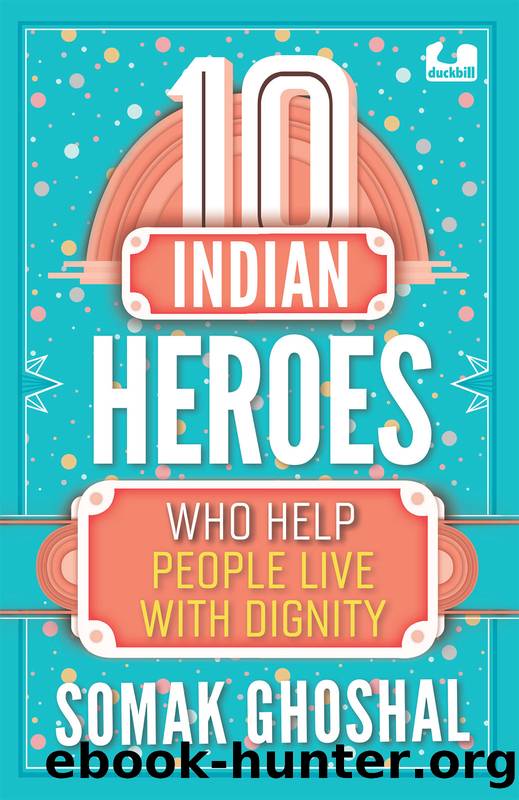10 Indian Heroes Who Help People Live With Dignity by Somak Ghoshal

Author:Somak Ghoshal
Language: eng
Format: epub
Publisher: Penguin Random House India Private Limited
Published: 2020-04-02T00:00:00+00:00
The Fight for Safe Workplaces
Bhanwari Devi
It is likely that you have come across the term âMeTooâ already. Since 2018, it has regularly appeared on television debates, the internet, in newspapers and magazines across India. You may have heard people speak of it. You probably know that it refers to a movement that first took off on social media, where women from different parts of the world joined voices to speak up against injustices they have facedâand are still facingâat the workplace from their male colleagues and bosses.
None of this is newsâat least to most women. But suddenly, the scale of the problem was laid bare for everyone to see.
For centuries, women around the world have mostly suffered in silence at the hands of menâat home, work or on the streets. Even those who refused to stay quiet usually had little hope of getting a fair hearing from the law. In many countries, including India, the burden of proving such crimes was largely put on the already suffering women, adding insult to injury. It was no different when the MeToo movement broke out. The accusations were mostly greeted with naïve disbelief or mounting outrage.
But thirty years ago, it was due to the bravery of one unlettered village woman that India witnessed its first MeToo momentâlong before there was any internet or social media, let alone the name we now know this movement by.
In 1992, Bhanwari Devi was just another twenty-five-year-old woman from the kumhar community (who are potters by profession) living in a village in Rajasthan, near the stateâs capital, Jaipur. But in many ways she was unlike the women around her. When the state government launched a campaign to stop people from getting their children married off before they came of age, Bhanwari Devi volunteered to act as a saathinâa woman whose job was to spread awareness about the evils of child marriage.
The challenge was truly monumental. It was a long-established custom in the rural parts of Rajasthan to get children married when they were barely a few years (sometimes months!) old, long before they were anywhere near the legal age of marriageâeighteen for girls and twenty-one for boys. Local sentiments were so strong about this tradition that the police found it difficult to intervene. Even if they succeeded in stopping a wedding, the parents often found another opportunity within days to get the deed done. It was clear that the fear of the law alone wasnât going to put an end to this nasty practice.
So women like Bhanwari Devi, who were familiar with the locals and their beliefs, were trained to go around and explain to them the importance of waiting to get their children married until they attained the legal age. Poor, illiterate and from a lower caste, Bhanwari Devi was a victim of this horrible custom herself, married off when she was a baby. At an age when she should have looked forward to playing with other children and going to school, she was dressed up as a bride and forced to step into an adult world.
Download
This site does not store any files on its server. We only index and link to content provided by other sites. Please contact the content providers to delete copyright contents if any and email us, we'll remove relevant links or contents immediately.
The Kite Runner by Khaled Hosseini(4416)
Bloody Times by James L. Swanson(3977)
The Mayflower and the Pilgrims' New World by Nathaniel Philbrick(3906)
Pocahontas by Joseph Bruchac(3720)
Flesh and Blood So Cheap by Albert Marrin(3391)
An American Plague by Jim Murphy(3366)
For the Love of Europe by Rick Steves(3134)
The 101 Dalmatians by Dodie Smith(2931)
Hello, America by Livia Bitton-Jackson(2720)
Finding Gobi by Dion Leonard(2253)
Harry Potter and the Half-Blood Prince (hp-6) by J. K. Rowling(2138)
The Impossible Rescue by Martin W. Sandler(1970)
See You in the Cosmos by Jack Cheng(1817)
I Will Always Write Back by Martin Ganda(1762)
Bloody Times: The Funeral of Abraham Lincoln and the Manhunt for Jefferson Davis by James L. Swanson(1723)
The Queen of Attolia by Megan Whalen Turner(1696)
When Dimple Met Rishi by Sandhya Menon(1677)
The Crossover by Kwame Alexander(1620)
Hoodoo by Ronald L. Smith(1573)
